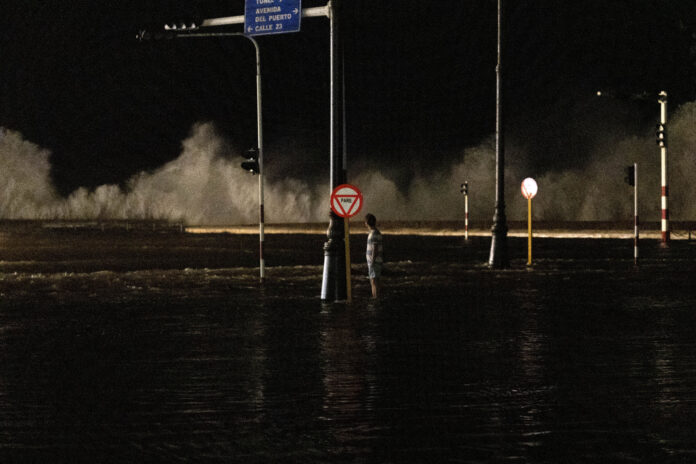Cuba remained in the dark early Wednesday after Hurricane Ian knocked out its power grid and devastated some of the country’s most important tobacco farms when it hit the island’s western tip as a major storm.
Authorities were working overnight to gradually restore service to the country’s 11 million people, according to a statement from Cuba’s Electric Union. Power was initially knocked out to about 1 million people in Cuba’s western provinces, but later the entire grid collapsed.
Ian hit a Cuba that has been struggling with an economic crisis and has faced frequent power outages in recent months. It made landfall as a Category 3 storm on the island’s western end, devastating Pinar del Río province, where much of the tobacco used for Cuba’s iconic cigars is grown.
Tens of thousands of people were evacuated and others fled the area ahead of the arrival of Ian, which caused flooding, damaged houses and toppled trees. Authorities were still assessing the damage, although no fatalities had been reported by Tuesday night.
Ian’s winds damaged one of Cuba’s most important tobacco farms in La Robaina.
“It was apocalyptic, a real disaster,” said Hirochi Robaina, owner of the farm that bears his name and that his grandfather made known internationally.
A man walks through a flooded street in front of a hotel powered by an oil generator during a blackout in Havana, Cuba, on Sept. 28. Cuba remained in the dark early Wednesday after Hurricane Ian knocked out its power grid and devastated some of the country’s most important tobacco farms when it hit the island’s western tip as a major storm.
Ramon Espinosa/AP
Robaina, also the owner of the Finca Robaina cigar producer, posted photos on social media of wood-and-thatch roofs smashed to the ground, greenhouses in rubble and wagons overturned.
Trending Stories
Oakville teacher controversy: Ontario College of Teachers asked to review professional standards
1 in 3 Canadians believe Trudeau should stay in power as Tories edge ahead: poll
State media said Cuban President Miguel Díaz-Canel visited the affected region.
“Being in the hurricane was terrible for me, but we are here alive,” said Pinar del Rio resident Yusimí Palacios, who asked authorities for a roof and a mattress.
Officials had set up 55 shelters and took steps to protect crops, especially tobacco.
The U.S. National Hurricane Center said Cuba suffered “significant wind and storm surge impacts” when the hurricane struck with top sustained winds of 125 mph (205 kph).
Florida residents scramble for safety, supplies as Hurricane Ian approaches
Ian was expected to get even stronger over the warm Gulf of Mexico, reaching top winds of 130 mph (209 kph) approaching the southwestern coast of Florida, where 2.5 million people were ordered to evacuate.
As the storm’s center moved into the Gulf, scenes of destruction emerged in Cuba. Authorities were still assessing the damage in its world-famous tobacco belt.
Local government station TelePinar reported heavy damage at the main hospital in Pinar del Rio city, tweeting photos of collapsed ceilings and downed trees. No deaths were reported.



